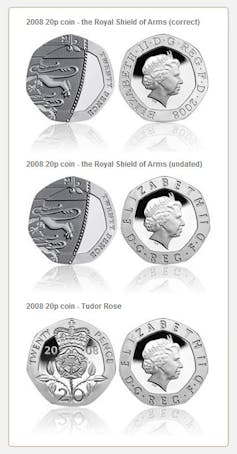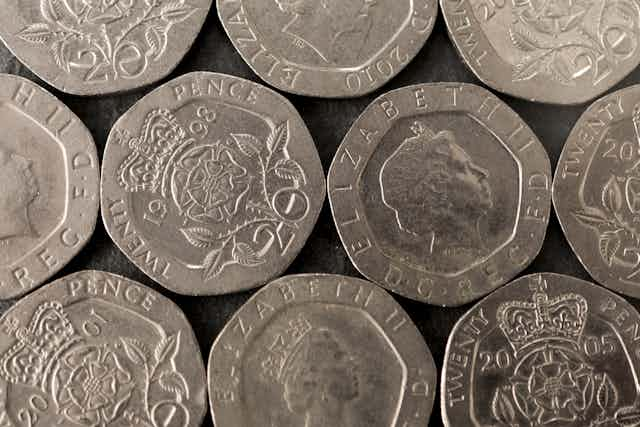Ten years ago, in November 2008, the Royal Mint issued an undated 20p coin. Instead of featuring the date that they were minted, as all coins are meant to, a mix up meant that the year of issue did not feature. This was the first time an undated coin entered circulation in more than 300 years; the last occasion being in 1672 during the reign of Charles II.
The problem arose when an old heads design was used with a new tails design. The date was not present on either side of these designs. The date was meant to move from the reverse (tails) side to the obverse (heads) side, but some coins were produced using the tooling for the obverse of an old design and the reverse of the new design. The date was missing from as many as 200,000 coins before the problem was noticed.

Here are ten things you may not know about the 20p coin, in commemoration of the ten-year anniversary.
Little coin, big history
1) The 20p coin was introduced on June 9, 1982. At the end of the 1970s, there was a view that the decimal currency was too heavy. The introduction of a 20p coin substantially reduced the weight of coins in circulation by decreasing the number of 10p coins in use.
2) The coin was introduced more than ten years after the UK and Ireland changed to a decimal system of currency, which was on February 15,, 1971. Before decimalisation, the currency was based on pounds (240 pence), shillings (12 pence) and pence, so 20 shillings made up a pound. The move to decimal currency ensured that all the currency used base 10, rather than the previous system, which used both base 12 and base 20.
3) In 1982, at the same time the 20p was introduced, the word “new” in “new penny” or “new pence” was removed from coins and replaced by the number of pence. From its introduction, the 20p coin only ever said “twenty pence”.
4) In 2008-09, 136m 20p coins were minted, worth £27.2m pounds. In March 2016, the Royal Mint reported that there were more than three billion 20p coins in circulation, which are are worth more than £600m.
5) The undated 20p is legal tender and should you find one it has a face value of 20p. Of course, they are sought by collectors and some stories have said they were worth thousands of pounds, although a cursory search on eBay suggests you’re more likely to get around £50 for one.
6) A coin which has the incorrect combination of obverse (heads) and reverse (tails) is called a “mule”. A mule could be made up of two obverse sides, or an incorrect combination of obverse and reverse, which is the case with the 2008 undated 20p coin.
7) The shape of a 20p coin is an equilateral curve heptagon. This means it has seven edges, which are all the same length. However, the edges are not straight. As the name of the shape suggests, the edges are curved. The 50p is also an equilateral curve heptagon.
8) All circular coins have the same width (diameter) no matter how you measure it. It might seem strange, but an equilateral curve heptagon also shares this property. No matter how you try and measure across its surface, you will find that the measurement is the same. This is important for coins as it makes life a lot easier for vending machine manufacturers as you know what the width of the coin should be, no matter its orientation. But from a user’s point of view, a 20p will feel different to other coins so is easy to differentiate, especially for those with visual impairments.
9) The 20p coin is legal tender up to £10 (which is 50 20p coins). You cannot legally pay for anything with more than this many 20p coins.
10) Since its introduction in 1982, the 20p coin has featured four different portraits of the Queen. They were designed by Arnold Machin (1982-1984), Raphael Maklouf (1985-1997), Ian Rank-Broadley FRBS (1998-2015) and Jody Clark (2015 to date).

